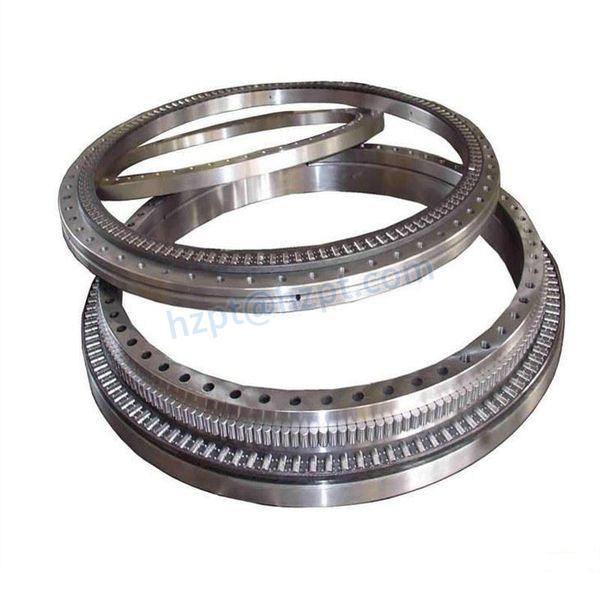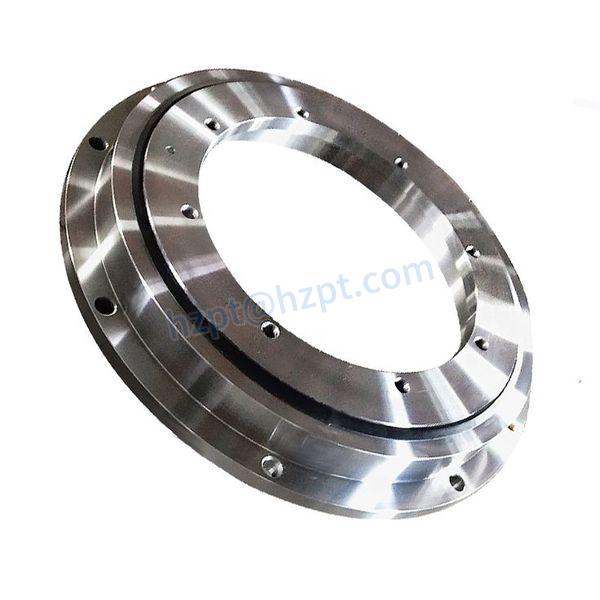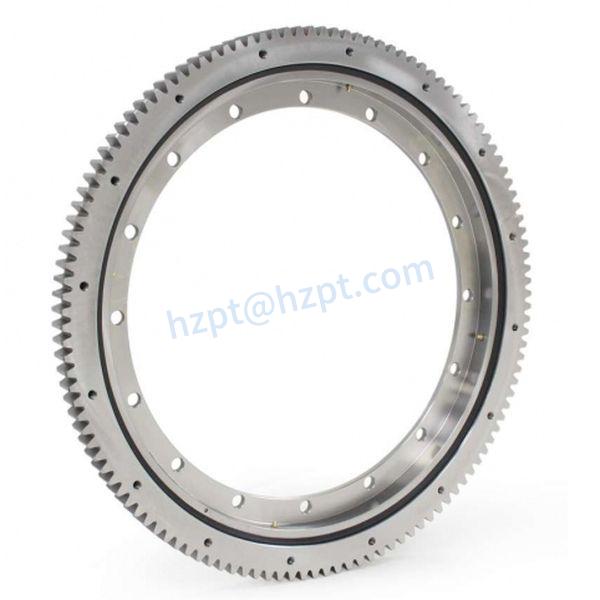Product Description
| Name | Cylindrical roller bearings |
| Seires | N/NJ/NU/NUP/NN/NNU/SL ect. |
| Brand | MONTON |
| Model | 543736 |
| d | 410mm |
| D | 560mm |
| B | 400mm |
| Load rating C | 6550KN |
| Load rating Co | 13400kN |
| Chamfers |
4mm |
| Chamfer1s | 2mm |
| Ring Material | Gcr15/ GCr15SiMn/20Cr2Ni4A/20Cr2MnMoA |
| Cage Material | Brass cage/Steel cage |
| Sealed | as customer requested |
| Weight | 285KG |
| Roller materail | Gcr15 |
| Design Structure | Cylin8drical roller |
| Precision | P4,P5 P6 or as customer requested |
| Vibration | ZV1, ZV2, ZV3, or as customer requested |
| Clearance | C0, C2, C3, or as customer requested |
| Quality standard | ISO9001: 2000/SGS |
| Package | Carton/Wooden case |
| Original | HangZhou |
| Service | OEM |
| Delivery date | Accordingly |
| Application | Large and medium-sized electric motors, locomotives and vehicles, machine tool spindles, internal combustion engines, generators, paper machines, mining machinery, gas turbines, reducers, rolling mills, vibrating screens, and lifting and transportation machinery. |
Cylindrical Roller Bearings
1. Structure and Characteristics Since the rollers of the cylindrical roller bearings make line contact with the raceways, these bearings can support heavy radial loads and are suitable for high speed operation.
Assembly and disassembly are comparatively easy even if the inner or outer ring requires a shrink fit, as the bearing is a separation type.
2.Cylindrical roller bearings are classified as single row, double row and 4 row type, according to how many rollers are used, and there are models as shown in Table 1 to 3. Although designed as a thin wall type, the SL Model double row cylindrical roller bearing can support enormous radial and impact loads. Table 4 lists the configurations available.
Features and benefits
High load carrying capacity
High stiffness
Accommodate axial displacement
Low friction
Long service life
Enhanced operational reliability
/* January 22, 2571 19:08:37 */!function(){function s(e,r){var a,o={};try{e&&e.split(“,”).forEach(function(e,t){e&&(a=e.match(/(.*?):(.*)$/))&&1
| Rolling Body: | Roller Bearings |
|---|---|
| The Number of Rows: | Single |
| Outer Dimension: | 590 |
| Material: | Bearing Steel |
| Spherical: | Non-Aligning Bearings |
| Load Direction: | Radial Bearing |
| Samples: |
US$ 1000/Piece
1 Piece(Min.Order) | |
|---|
| Customization: |
Available
| Customized Request |
|---|

What Role do Seals and Enclosures Play in Protecting Slewing Bearings from Contaminants?
Seals and enclosures play a crucial role in safeguarding slewing bearings from contaminants, moisture, and other external factors that can lead to premature wear and damage. Here’s how seals and enclosures contribute to the protection of slewing bearings:
- Contaminant Exclusion:
Seals and enclosures create a physical barrier that prevents contaminants like dust, dirt, sand, and particles from entering the bearing’s internal components. This exclusion minimizes abrasive wear and preserves the integrity of the rolling elements and raceways.
- Moisture and Corrosion Prevention:
Seals and enclosures provide a shield against moisture and water ingress, crucial in preventing corrosion and rust formation on bearing surfaces. Corrosion-resistant seals are particularly valuable in marine and humid environments.
- Chemical and Chemical Vapor Resistance:
Specialized seals and enclosures can offer resistance to chemicals, acids, and corrosive substances that might be present in the operating environment. This protection prevents chemical damage to the bearing’s components.
- Lubrication Retention:
Seals and enclosures help retain the lubricant within the bearing, preventing it from leaking out and ensuring consistent lubrication for smooth operation. This is essential for reducing friction and wear.
- Prevention of Solid Particle Contamination:
Seals and enclosures block solid particles from entering the bearing chamber, reducing the risk of particle-induced wear, surface damage, and premature failure.
- Temperature Regulation:
Some seals and enclosures offer thermal insulation, which helps regulate the operating temperature of the bearing. This can be crucial in applications with extreme temperature variations.
- Enhanced Longevity:
By protecting the bearing from contaminants and adverse environmental conditions, seals and enclosures contribute to the extension of the bearing’s operational life, reducing the need for frequent replacements.
- Sealing Types:
Seals can come in various types, including lip seals, labyrinth seals, and specialized designs. The choice of seal depends on the application’s requirements and the level of protection needed.
- Proper Installation and Maintenance:
Proper installation and regular inspection of seals and enclosures are essential to ensure their effectiveness. Damaged or worn seals should be promptly replaced to maintain protection.
In summary, seals and enclosures serve as a critical defense mechanism for slewing bearings against contaminants, moisture, and harmful substances. They contribute to the bearing’s reliability, performance, and overall longevity in various operating environments.

How does Proper Lubrication Impact the Performance and Longevity of Slewing Bearings?
Proper lubrication plays a crucial role in enhancing the performance and extending the longevity of slewing bearings. Here’s how it impacts these aspects:
- Reduced Friction and Wear:
Lubrication forms a protective layer between the rolling elements and raceways, reducing friction and wear. This minimizes surface contact and prevents metal-to-metal contact, leading to less wear and extended bearing life.
- Heat Dissipation:
Lubrication helps dissipate heat generated during operation. Adequate heat management prevents overheating, which can otherwise lead to premature bearing failure and reduced efficiency.
- Corrosion Protection:
Lubricants with anti-corrosion properties form a barrier that protects bearing surfaces from moisture and environmental contaminants. This is crucial in preventing rust and corrosion, especially in challenging operating environments.
- Sealing Effect:
Lubrication can enhance the sealing effect of bearing seals, preventing the ingress of dust, dirt, and other particles. This maintains the integrity of the bearing’s internal components and reduces the risk of contamination-related failures.
- Noise and Vibration Reduction:
Properly lubricated bearings generate less friction and operate more smoothly, resulting in reduced noise and vibration levels. This is particularly important in applications where noise reduction is essential.
- Improved Efficiency:
Effective lubrication minimizes energy losses due to friction, leading to improved overall efficiency of machinery. This is significant in applications that require high performance and energy savings.
- Prevention of Micro-Movements:
Lubrication helps prevent micro-movements between the rolling elements and raceways, reducing wear caused by repeated impacts and vibrations during operation.
- Maintenance Reduction:
Proper lubrication reduces the need for frequent maintenance and replacement of bearings. This not only saves time and resources but also contributes to increased uptime and reduced operational disruptions.
- Longevity:
By reducing wear, preventing corrosion, and managing heat, proper lubrication significantly extends the lifespan of slewing bearings. This, in turn, contributes to improved equipment reliability and reduced lifecycle costs.
In conclusion, proper lubrication is essential for optimizing the performance, efficiency, and durability of slewing bearings. Regular maintenance and adherence to manufacturer-recommended lubrication intervals ensure that the bearings operate smoothly and consistently over their operational life.

What are the Materials Commonly Used in Manufacturing Slewing Bearings and Their Respective Benefits?
Slewing bearings are manufactured using a variety of materials, each offering specific benefits that suit different industrial applications. Some common materials and their advantages include:
- Steel:
High-quality steel, such as chrome or stainless steel, is widely used due to its durability, strength, and resistance to corrosion. Steel bearings can handle heavy loads and offer excellent wear resistance, making them suitable for heavy-duty applications.
- Forged Steel:
Forged steel is even more robust than standard steel due to the manufacturing process that aligns the grain structure. This material is suitable for applications with extreme loads, harsh environments, and high impact forces.
- Bearing Steel:
Bearing steel, designed specifically for rolling-element bearings, provides superior hardness and wear resistance. It’s commonly used in slewing bearings to extend their service life and minimize wear.
- Alloy Steel:
Alloy steels offer a combination of strength, toughness, and corrosion resistance. They are suitable for applications that require both load-bearing capacity and resistance to challenging conditions.
- Cast Iron:
Cast iron is often used in smaller, low-load slewing bearings. It provides good damping properties and is cost-effective for less demanding applications.
- Bronze:
Bronze bearings are known for their self-lubricating properties and resistance to corrosion. They are commonly used in applications where maintenance-free operation and low friction are important.
- Plastics and Polymers:
Various plastics and polymers are employed for their lightweight, corrosion resistance, and low friction characteristics. These materials are suitable for applications that require chemical resistance and reduced noise levels.
- Ceramics:
Ceramic materials offer excellent corrosion resistance, high temperature resistance, and electrical insulation properties. While less common, they are used in specialized applications like semiconductor manufacturing and certain medical equipment.
- Coatings:
Special coatings like zinc, nickel, or chrome plating can be applied to enhance corrosion resistance and reduce friction. These coatings are often used in combination with other base materials to improve performance.
Choosing the appropriate material depends on factors like load, environment, operating conditions, and maintenance requirements. Engineers carefully consider these factors to ensure that the selected material aligns with the specific needs of the application.


editor by CX 2024-05-10
by
Tags:
Leave a Reply